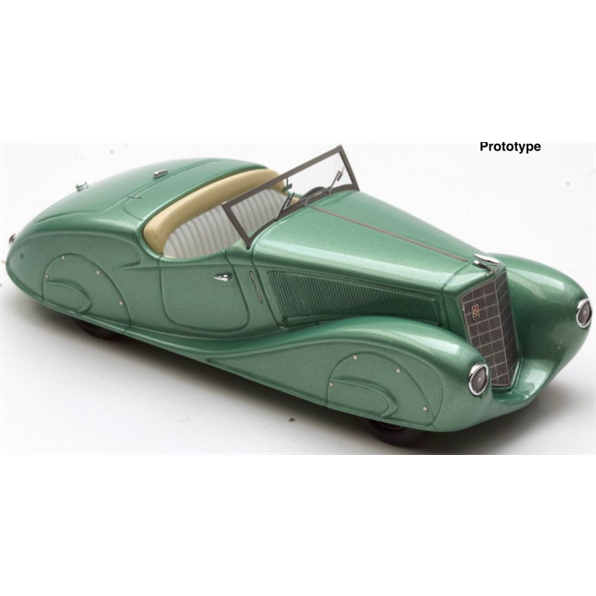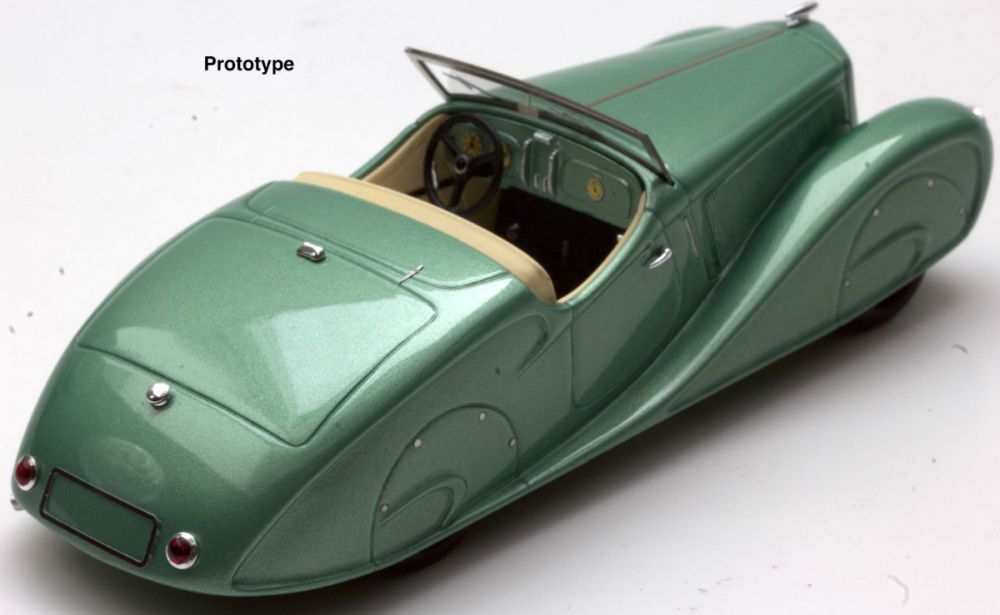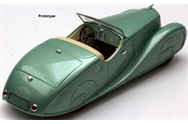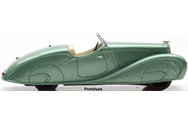Opel 2 Litre Stromlinien Sport Roadster 1935 Green
Product Description
Scale: 1:43
From February 14 - 24, 1935, the Automobile and Motorcycle Exhibition was held in Berlin. The Berlin coachbuilding company Erdmann & Rossi (E&R) exhibited two very similar cars there: These were a 2.9-ltr Mercedes Benz with fashionable streamlined bodywork and a two-seater Opel 2-ltr streamlined sport roadster. According to E&R commission slip #22563, the client for the 2.9-Ltr. Mercedes Benz was Erdmann & Rossi themselves. This allows the interpretation that the car was manufactured at Erdmann & Rossi's own expense and risk.
This is somewhat different with the Opel 2-Ltr. streamlined sports roadster. Thankfully, we have a copy of the E&R commission bill #2566 from Erdmann & Rossi. Adam Opel AG is named as the purchaser. So it can be assumed that Opel at least paid for the body. Whether Opel also provided and paid for the chassis # 11417, we do not know. Furthermore, it is noted on the commission bill that the car is for an exhibition. The agreed delivery date was Feb. 10, 1935. The roadster had a fully retractable top, rear wheels covered but removable, two electric winkers, and a Bo wiper.
At the end of 1935, Erdmann & Rossi delivered a Mercedes Benz with streamlined bodywork in the same design to the King of Iraq, but for this the chassis of a Mercedes-Benz Type 540K was used. What became of the sleek Opel 2-Ltr. streamlined sports roadster, we do not know. Perhaps you do know!
Ironically: At the 1935 Automobile and Motorcycle Show, Opel introduced an innovation of enormous significance on your own stand. The new Opel Olympia no longer had a chassis, but featured a self-supporting body. This new technology had the advantage that the cars could be produced faster, lighter and therefore cheaper. On the other hand, the chassis-less car no longer offered body builders the basis for producing individual bodies. The consequence of using this technology, which is still valid today, was a gradual decline of the body building companies.





